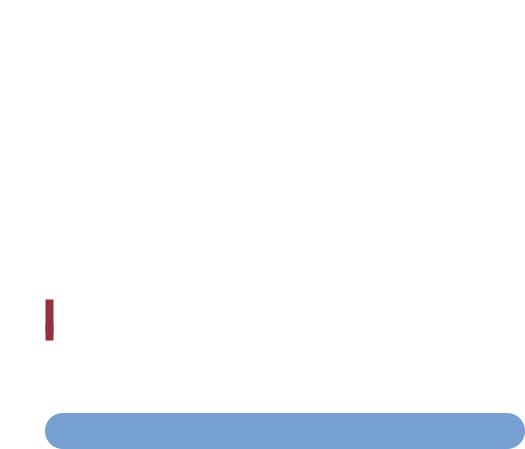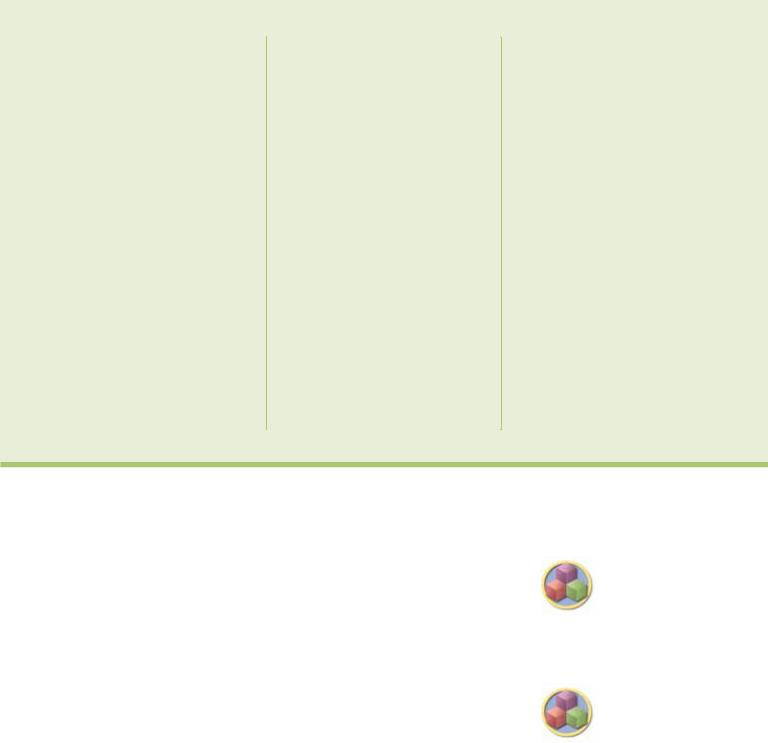450 |
PART SIX THE ECONOMICS OF LABOR MARKETS |
because Rawls’s philosophy puts weight on only the least fortunate members of society, it calls for more income redistribution than does utilitarianism.
Rawls’s views are controversial, but the thought experiment he proposes has much appeal. In particular, this thought experiment allows us to consider the redistribution of income as a form of social insurance. That is, from the perspective of the original position behind the veil of ignorance, income redistribution is like an insurance policy. Homeowners buy fire insurance to protect themselves from the risk of their housing burning down. Similarly, when we as a society choose policies that tax the rich to supplement the incomes of the poor, we are all insuring ourselves against the possibility that we might have been a member of a poor family. Because people dislike risk, we should be happy to have been born into a society that provides us this insurance.
It is not at all clear, however, that rational people behind the veil of ignorance would truly be so averse to risk as to follow the maximin criterion. Indeed, because a person in the original position might end up anywhere in the distribution of outcomes, he or she might treat all possible outcomes equally when designing public policies. In this case, the best policy behind the veil of ignorance would be to maximize the average utility of members of society, and the resulting notion of justice would be more utilitarian than Rawlsian.
liber tarianism
the political philosophy according to which the government should punish crimes and enforce voluntary agreements but not redistribute income
LIBER TARIANISM
A third view of inequality is called libertarianism. The two views we have considered so far—utilitarianism and liberalism—both view the total income of society as a shared resource that a social planner can freely redistribute to achieve some social goal. By contrast, libertarians argue that society itself earns no in- come—only individual members of society earn income. According to libertarians, the government should not take from some individuals and give to others in order to achieve any particular distribution of income.
For instance, philosopher Robert Nozick writes the following in his famous 1974 book Anarchy, State and Utopia:
We are not in the position of children who have been given portions of pie by someone who now makes last minute adjustments to rectify careless cutting. There is no central distribution, no person or group entitled to control all the resources, jointly deciding how they are to be doled out. What each person gets, he gets from others who give to him in exchange for something, or as a gift. In a free society, diverse persons control different resources, and new holdings arise out of the voluntary exchanges and actions of persons.
Whereas utilitarians and liberals try to judge what amount of inequality is desirable in a society, Nozick denies the validity of this very question.
The libertarian alternative to evaluating economic outcomes is to evaluate the process by which these outcomes arise. When the distribution of income is achieved unfairly—for instance, when one person steals from another—the government has the right and duty to remedy the problem. But, as long as the process determining the distribution of income is just, the resulting distribution is fair, no matter how unequal.
Nozick criticizes Rawls’s liberalism by drawing an analogy between the distribution of income in society and the distribution of grades in a course. Suppose you were asked to judge the fairness of the grades in the economics course you are
CHAPTER 20 INCOME INEQUALITY AND POVERTY |
451 |
now taking. Would you imagine yourself behind a veil of ignorance and choose a grade distribution without knowing the talents and efforts of each student? Or would you ensure that the process of assigning grades to students is fair without regard for whether the resulting distribution is equal or unequal? For the case of grades at least, the libertarian emphasis on process over outcomes is compelling.
Libertarians conclude that equality of opportunities is more important than equality of incomes. They believe that the government should enforce individual rights to ensure that everyone has the same opportunity to use his or her talents and achieve success. Once these rules of the game are established, the government has no reason to alter the resulting distribution of income.
QUICK QUIZ: Pam earns more than Pauline. Someone proposes taxing Pam in order to supplement Pauline’s income. How would a utilitarian, a liberal, and a libertarian evaluate this proposal?
POLICIES TO REDUCE POVERTY
As we have just seen, political philosophers hold various views about what role the government should take in altering the distribution of income. Political debate among the larger population of voters reflects a similar disagreement. Despite these continuing debates, however, most people believe that, at the very least, the government should try to help those most in need. According to a popular metaphor, the government should provide a “safety net” to prevent any citizen from falling too far.
Poverty is one of the most difficult problems that policymakers face. Poor families are more likely than the overall population to experience homelessness, drug dependency, domestic violence, health problems, teenage pregnancy, illiteracy, unemployment, and low educational attainment. Members of poor families are both more likely to commit crimes and more likely to be victims of crimes. Although it is hard to separate the causes of poverty from the effects, there is no doubt that poverty is associated with various economic and social ills.
Suppose that you were a policymaker in the government, and your goal was to reduce the number of people living in poverty. How would you achieve this goal? Here we consider some of the policy options that you might consider. Although each of these options does help some people escape poverty, none of them is perfect, and deciding which is best is not easy.
MINIMUM-WAGE LAWS
Laws setting a minimum wage that employers can pay workers are a perennial source of debate. Advocates view the minimum wage as a way of helping the working poor without any cost to the government. Critics view it as hurting those it is intended to help.
The minimum wage is easily understood using the tools of supply and demand, as we first saw in Chapter 6. For workers with low levels of skill and experience, a
452 |
PART SIX THE ECONOMICS OF LABOR MARKETS |
|
high minimum wage forces the wage above the level that balances supply and de- |
|
mand. It therefore raises the cost of labor to firms and reduces the quantity of labor |
|
that those firms demand. The result is higher unemployment among those groups of |
|
workers affected by the minimum wage. Although those workers who remain em- |
|
ployed benefit from a higher wage, those who might have been employed at a lower |
|
wage are worse off. |
|
The magnitude of these effects depends crucially on the elasticity of demand. |
|
Advocates of a high minimum wage argue that the demand for unskilled labor is |
|
relatively inelastic, so that a high minimum wage depresses employment only |
|
slightly. Critics of the minimum wage argue that labor demand is more elastic, es- |
|
pecially in the long run when firms can adjust employment and production more |
|
fully. They also note that many minimum-wage workers are teenagers from |
|
middle-class families, so that a high minimum wage is imperfectly targeted as a |
|
policy for helping the poor. |
|
WELFARE |
|
One way to raise the living standards of the poor is for the government to supple- |
|
ment their incomes. The primary way in which the government does this is |
welfar e |
through the welfare system. Welfare is a broad term that encompasses various |
government programs that |
government programs. Temporary Assistance for Needy Families (formerly called |
supplement the incomes of the needy Aid to Families with Dependent Children) is a program that assists families where there are children but no adult able to support the family. In a typical family receiving such assistance, the father is absent, and the mother is at home raising small children. Another welfare program is Supplemental Security Income (SSI), which provides assistance to the poor who are sick or disabled. Note that for both of these welfare programs, a poor person cannot qualify for assistance simply by having a low income. He or she must also establish some additional “need,” such as small children or a disability.
A common criticism of welfare programs is that they create incentives for people to become “needy.” For example, these programs may encourage families to break up, for many families qualify for financial assistance only if the father is absent. The programs may also encourage illegitimate births, for many poor, single women qualify for assistance only if they have children. Because poor, single mothers are such an important part of the poverty problem and because welfare programs seem to raise the number of poor, single mothers, critics of the welfare system assert that these policies exacerbate the very problems they are supposed to cure. As a result of these arguments, the welfare system was revised in a 1996 law that limited the amount of time recipients could stay on welfare.
How severe are these potential problems with the welfare system? No one knows for sure. Proponents of the welfare system point out that being a poor, single mother on welfare is a difficult existence at best, and they are skeptical that many people would be encouraged to pursue such a life if it were not thrust upon them. Moreover, trends over time do not support the view that the decline of the two-parent family is largely a symptom of the welfare system, as the system’s critics sometimes claim. Since the early 1970s, welfare benefits (adjusted for inflation) have declined, yet the percentage of children living with only one parent has risen.
CHAPTER 20 INCOME INEQUALITY AND POVERTY |
453 |
|
|
|
|
IN THE NEWS
Should the Government Try
to Help Poor Regions?
first economic rule of urban poverty policy: Programs should be person-based, not place-based.
support on the basis of location. Examples of such policies are housing projects and enterprise zones. President Clinton’s recent Rural Housing and Economic Development Assistance for Kentucky or the new Empowerment Zone Grant for East St. Louis, Ill., are quintessential place-based policies.
The problem with place-based programs is that they create incentives to keep the poor in the ghetto. By subsidizing the place, not the person living there, these policies make it more attractive for the poor to stay in high-poverty areas. Indeed, current research shows that supposedly benevolent pro-poor housing and transfer policies play a major role in herding the poor into inner cities.
It’s hard to see the logic in artificially limiting migration and concentrating the poor in areas with low productivity. Movement out of low-productivity, highunemployment areas is one reason that unemployment rates in the U.S. stay low. Moreover, flight from the ghettos
enabled many African-Americans to the social costs of the inner city, black-white segregation in the U.S. declined substantially because of it. Place-based programs also suffer the fact that their benefits go dis-
proportionately to property owners in the areas—and not to the intended beneficiaries. If the government offers credits to firms that invest in a poor region, for instance, then firms will locate there, pushing up property values and rents. But the benefits of increased economic activity will evaporate as higher housing costs eat away the planned ben-
efits to the needy. . . .
If place-based policies are so bad, why are they so popular? A cynic might say that the residents of wealthy suburbs prefer that the poor remain in ghettos. A more practical explanation is that we have place-based politicians who lobby for place-based policies. . . .
A wise alternative to such faulty place-based poverty assistance would be a program that offers tax credits to companies that employ the disadvantaged. This would be a less distortionary means of assisting the poor.
SOURCE: The Wall Street Journal, August 12, 1999, p. A22.
NEGATIVE INCOME TAX
Whenever the government chooses a system to collect taxes, it affects the distribution of income. This is clearly true in the case of a progressive income tax, whereby high-income families pay a larger percentage of their income in taxes than do lowincome families. As we discussed in Chapter 12, equity across income groups is an important criterion in the design of a tax system.
CHAPTER 20 INCOME INEQUALITY AND POVERTY |
455 |
misfortune, they are in the best position to decide how to raise their own living standards. Rather than giving the poor in-kind transfers of goods and services that they may not want, it may be better to give them cash and allow them to buy what they think they need most.
ANTIPOVERTY PROGRAMS AND WORK INCENTIVES
Many policies aimed at helping the poor can have the unintended effect of discouraging the poor from escaping poverty on their own. To see why, consider the following example. Suppose that a family needs an income of $15,000 to maintain a reasonable standard of living. And suppose that, out of concern for the poor, the government promises to guarantee every family that income. Whatever a family earns, the government makes up the difference between that income and $15,000. What effect would you expect this policy to have?
The incentive effects of this policy are obvious: Any person who would make under $15,000 by working has no incentive to find and keep a job. For every dollar that the person would earn, the government would reduce the income supplement by a dollar. In effect, the government taxes 100 percent of additional earnings. An effective marginal tax rate of 100 percent is surely a policy with a large deadweight loss.
The adverse effects of this high effective tax rate can persist over time. A person discouraged from working loses the on-the-job training that a job might offer. In addition, his or her children miss the lessons learned by observing a parent with a full-time job, and this may adversely affect their own ability to find and hold a job.
Although the antipoverty program we have been discussing is hypothetical, it is not as unrealistic as it might first appear. Welfare, Medicaid, food stamps, and the Earned Income Tax Credit are all programs aimed at helping the poor, and they are all tied to family income. As a family’s income rises, the family becomes ineligible for these programs. When all these programs are taken together, it is common for families to face effective marginal tax rates that are very high. Sometimes the effective marginal tax rates even exceed 100 percent, so that poor families are worse off when they earn more. By trying to help the poor, the government discourages those families from working. According to critics of antipoverty programs, these programs alter work attitudes and create a “culture of poverty.”
It might seem that there is an easy solution to this problem: Reduce benefits to poor families more gradually as their incomes rise. For example, if a poor family loses 30 cents of benefits for every dollar it earns, then it faces an effective marginal tax rate of 30 percent. Although this effective tax reduces work effort to some extent, it does not eliminate the incentive to work completely.
The problem with this solution is that it greatly increases the cost of programs to combat poverty. If benefits are phased out gradually as a poor family’s income rises, then families just above the poverty level will also be eligible for substantial benefits. The more gradual the phase-out, the more families are eligible, and the greater the cost of the program. Thus, policymakers face a tradeoff between burdening the poor with high effective marginal tax rates and burdening taxpayers with costly programs to reduce poverty.
There are various other ways to try to reduce the work disincentive of antipoverty programs. One is to require any person collecting benefits to accept a
456 |
PART SIX THE ECONOMICS OF LABOR MARKETS |
|
|
|
|
IN THE NEWS
Welfare Reform
for work. The 1996 law limits families to two years of welfare income during any one spell and caps the total time on welfare over a mother’s lifetime at five years.
The number of recipients rose sharply from the early 1960s, to a peak in 1993, when over 4 million American families were on welfare. In that year, an incredible 1 million residents of New York City alone were receiving welfare, up from 250,000 in 1960.
Wisconsin, Massachusetts, New Jersey, and a few other states decided in the late 1980s that this upward trend in
welfare populations while at the same time improving the economic situation of single-parent families. Recently, a careful evaluation of the Massachusetts reforms by economists M. Anne Hill and Thomas J. Main of the City University of New York concluded that they not only greatly reduced that state’s welfare caseload but also encouraged more young women to finish high school and sharpen their economic skills.
What worked in Massachusetts and other pioneering states was applicable throughout the nation, but the reassessment of federal welfare policy
government-provided job—a system sometimes called workfare. Another possibility is to provide benefits for only a limited period of time. This route was taken in a 1996 welfare reform bill. Advocates of time limits point to the falling poverty rate in the late 1990s as evidence supporting this approach. Critics argue that time limits are cruel to the least fortunate members of society and that the falling poverty rate in the late 1990s is due more to a strong economy than to welfare reform.
QUICK QUIZ: List three policies aimed at helping the poor, and discuss the pros and cons of each.
CONCLUSION
People have long reflected on the distribution of income in society. Plato, the ancient Greek philosopher, concluded that in an ideal society the income of the richest
CHAPTER 20 INCOME INEQUALITY AND POVERTY |
457 |
|
|
|
|
was opposed by many intellectuals. Some members of President Clinton’s team quit after the 1996 federal law, over what they considered a betrayal of the welfare state. They argued that most women forced off welfare would become homeless or destitute, since they supposedly are too mentally or physically handicapped or lacking in requisite skills to obtain and hold jobs.
However, this law has been highly successful in reversing the large growth in the number of welfare recipients in the United States. Most mothers forced off welfare found work and provide financial support for their children.
Certainly, the huge decline—by over 40 percent—in the number of single mothers on welfare from the 1993 peak is partly due to the booming economy of the past seven years. However, most of this decline took place in the two years after the passage of the 1996 act. The study of Massachusetts’ experience cited earlier confirms the importance of
the new approach to welfare, since the authors’ research attributes more than one-third of the decline in that state’s welfare role since 1995 to the reforms and not simply to its buoyant economy.
The federal law recognizes that the number of families in need of assistance always rises sharply during bad economic times. This is why each welfare spell is allowed to last up to two years, and mothers with dependent children can have multiple spells, up to a total of five years over their lifetimes. It further acknowledges that some women are handicapped and unable to work. What it aims to discourage is the attraction of welfare to able-bodied women during good times when jobs are available.
The act also recognizes that many poor working mothers will not earn enough to provide a decent standard of living for their families. Children of unmarried working mothers continue to be eligible for Medicaid and food stamps, and they benefit from the earned-income
tax credit that is available only to poorer working parents with children.
One of the most important, if hardest to document, gains from taking families off welfare is their greater self-respect when they provide for themselves. Mothers on welfare convey the impression to their children that it is normal to live off government handouts. In such an environment, it is difficult for children to place a high value on doing well at school and preparing for work by seeking out training on jobs and in schools.
Welfare reform has been a resounding success in inducing unmarried mothers to find jobs. This revolutionary approach to welfare is based on the appreciation that the vast majority of families do much better when treated as responsible adults and offered effective incentives to help themselves.
SOURCE: Business Week, May 24, 1999, p. 18.
person would be no more than four times the income of the poorest person. Although the measurement of inequality is difficult, it is clear that our society has much more inequality than Plato recommended.
One of the Ten Principles of Economics discussed in Chapter 1 is that governments can sometimes improve market outcomes. There is little consensus, however, about how this principle should be applied to the distribution of income. Philosophers and policymakers today do not agree on how much income inequality is desirable, or even whether public policy should aim to alter the distribution of income. Much of public debate reflects this disagreement. Whenever taxes are raised, for instance, lawmakers argue over how much of the tax hike should fall on the rich, the middle class, and the poor.
Another of the Ten Principles of Economics is that people face tradeoffs. This principle is important to keep in mind when thinking about economic inequality. Policies that penalize the successful and reward the unsuccessful reduce the incentive to succeed. Thus, policymakers face a tradeoff between equality and efficiency. The more equally the pie is divided, the smaller the pie becomes. This is the one lesson concerning the distribution of income about which almost everyone agrees.
458 |
PART SIX THE ECONOMICS OF LABOR MARKETS |
Summar y
Data on the distribution of income in our society. The richest fifth of ten times as much income as the
Because in-kind transfers, the transitory income, and economic important for understanding difficult to gauge the degree of using data on the distribution of When these factors are taken into suggest that economic well-being distributed than is annual income
Political philosophers differ in of government in altering the Utilitarians (such as John Stuart
distribution of income to maximize everyone in society. Liberals (such
distribution of income as if we were ignorance” that prevented us from
stations in life. Libertarians (such as have the government enforce
ensure a fair process but then not be inequality in the resulting distribution
to help the poor—minimum-wage income taxes, and in-kind
each of these policies helps some poverty, they also have unintended side financial assistance declines as income
face effective marginal tax rates that high effective tax rates discourage escaping poverty on their own.
Key Concepts
poverty rate, p. 442 poverty line, p. 442 in-kind transfers, p. 444 life cycle, p. 444
maximin criterion, p. 448 libertarianism, p. 450 welfare, p. 452
negative income tax, p. 454
1.Does the richest fifth of the U.S. four, or ten times the income of
2.How does the extent of income States compare to that of other
3.What groups in the population poverty?
4.When gauging the amount of transitory and life cycle variations difficulties?
a liberal, and a libertarian income inequality is permissible?
and cons of in-kind (rather than cash)
antipoverty programs can discourage the How might you reduce this
are the disadvantages with your
Problems and Applications
1.Table 20-2 shows that income inequality in the United States has increased during the past 20 years. Some factors contributing to this increase were discussed in Chapter 19. What are they?
2.Table 20-4 shows that the percentage of children in families with income below the poverty line is almost twice the percentage of the elderly in such families. How might the allocation of government money across






